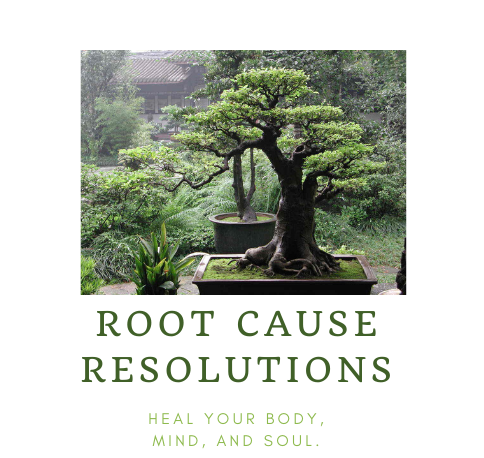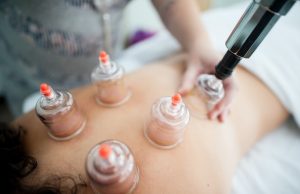
Throughout history and all over the globe, people have turned to cupping therapy as a means of healing. Nowadays, thanks to high-profile athletes and health-conscious celebrities, it’s experiencing a renaissance in the United States. However, because people’s shoulders and backs may get red, round markings (not bruises!) from cupping, many individuals are curious about the results and want to know more about the experience. That’s why we’ve gathered information on what you can expect from your first cupping therapy session.
What is cupping, and what to expect from your first therapy session?
During cupping, cups (usually glass or plastic) are used to exert suction to specific spots on the body. As the skin is drawn up into the cup, the suction will feel tight at first (but not painful). The uncomfortable feeling will disappear as soon as the therapist moves on to the next cup. The suction will be used repeatedly while the therapist positions the cups on your back, shoulders, abdomen, etc., while constantly checking if you’re comfortable.
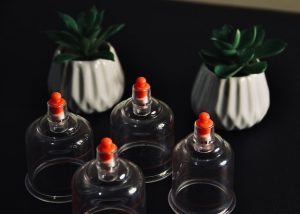
Your body will get used to the sensation of the cups rather quickly. It’s improbable that you’ll feel every cup that’s being set. Usually, the first time you attempt cupping, therapists use fewer cups for gentler treatment. Depending on your condition, your therapist may leave the cups in place for five to twenty minutes.
When it’s time to remove the cups, your therapist will stop applying pressure to the cup and lay it aside. Most people report a sense of relief upon letting off steam or letting go of some tension in their bodies. Sometimes, your therapist may apply a light lotion or oil before use to allow the cups to move easily across the skin.
What is the purpose of cupping?
The goal of cupping can be either physical or emotional. From the perspective of traditional Chinese medicine, cupping functions similarly to how acupuncture patients may experience a catharsis or “release” when the needles make contact with a specific location. We have nerves that exit our spinal column and connect to every organ, and therapists stimulate the base of these nerve connections on the back using cups.
Another purpose of cupping is to get the body to mend itself by getting fluids moving about. Many experts claim that getting the circulation moving in the body is inherently therapeutic. Getting things moved helps with feelings of “stuck-ness,” both emotionally and physically, because blood has the power to retain our emotions, too.
What do suction cups do?
When your therapist places cups on your skin, they will lift and loosen the connective tissues underneath it. In return, this will stimulate the blood and lymph flow to the skin and muscles. The damaged area receives oxygenated blood and lymph fluid thanks to the directed blood flow. This allows the lymphatic system to remove metabolic byproducts and other unwanted substances from the body, helping the body eliminate toxins more efficiently. It can even help treat different conditions or at least help relieve the symptoms.
Will the red marks disappear quickly?
Remember that the cup markings, which are circular and red, are NOT bruises. Also, it’s highly unusual for one to cause pain. Bruises form when capillaries in the damaged area rupture due to impact trauma. On the other hand, when cupping is performed correctly, you should not experience any compression or impact stress.
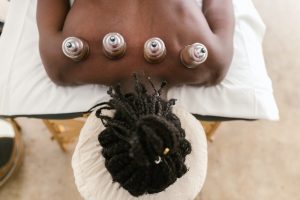
Your skin and muscles will be lifted and tightened rather than compressed and pushed. The red marks form because the blood is drawn to a specific location. The more sluggish fluids (toxins, blood, lymph) were dug up during treatment, the darker the mark. In most cases, the red round marks will disappear after a few days.
What to expect from post-cupping care?
After your cupping therapy session, you can expect your therapist to provide you with more in-depth guidance for continuing your recovery at home. However, here are the main things you should focus on:
- Keep yourself hydrated at all times! Hydrate thoroughly so your lymphatic system can remove waste products from your body.
- Wait at least a few hours before taking a shower following cupping.
- Keep the treated areas warm and covered.
- Avoid drinking alcohol.
- The day after your treatment, you may feel drained or perhaps sick with a fever or chills. To some extent, this is to be expected. This is your body eliminating the toxins generated during the cupping process. Relax, sleep in, and treat yourself well. That’s what your body needs.
Benefits of cupping
While preliminary evidence supports cupping’s efficacy, a significant barrier to more in-depth investigation is how difficult it is to conduct a double-blind trial. Yet, many studies have shown that cupping can help with discomforts. One study from 2016 indicated that after just one session of cupping therapy, patients had a 50% reduction in their chronic neck and shoulder discomfort.
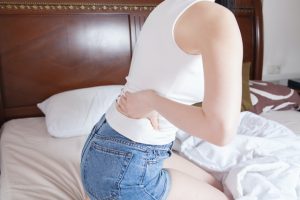
Nowadays, cupping is a very popular way to relieve pain and help with various medical conditions as it is very successful in lowering both physical and mental stress. It has even been reported that cupping therapy can be a powerful ally in drug and alcohol addiction recovery. Since it is an excellent way to help the body get rid of toxins, it significantly accelerates the lengthy and grueling process of healing. So, if you happen to notice the warning signs of addiction in yourself or your loved ones, don’t ignore them and give this ancient treatment a chance.
Final thoughts
We hope our article helped you understand what cupping is, how it can help you, and what you can expect from your first therapy session. As you can see, it comes with many benefits, and in addition to helping you treat different medical conditions, it also leaves you feeling relaxed and refreshed. So, wait no more; book your cupping therapy session, and we guarantee it will quickly become your routine.
Guest article written by Amy Baker
